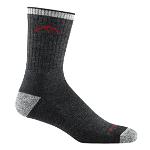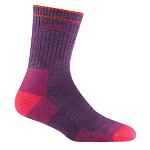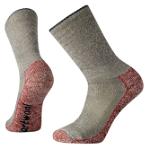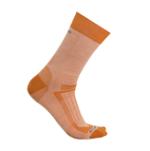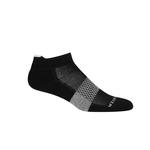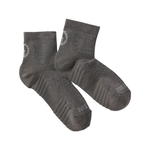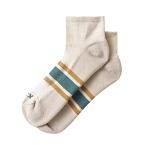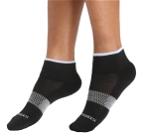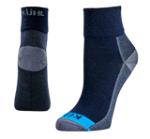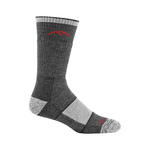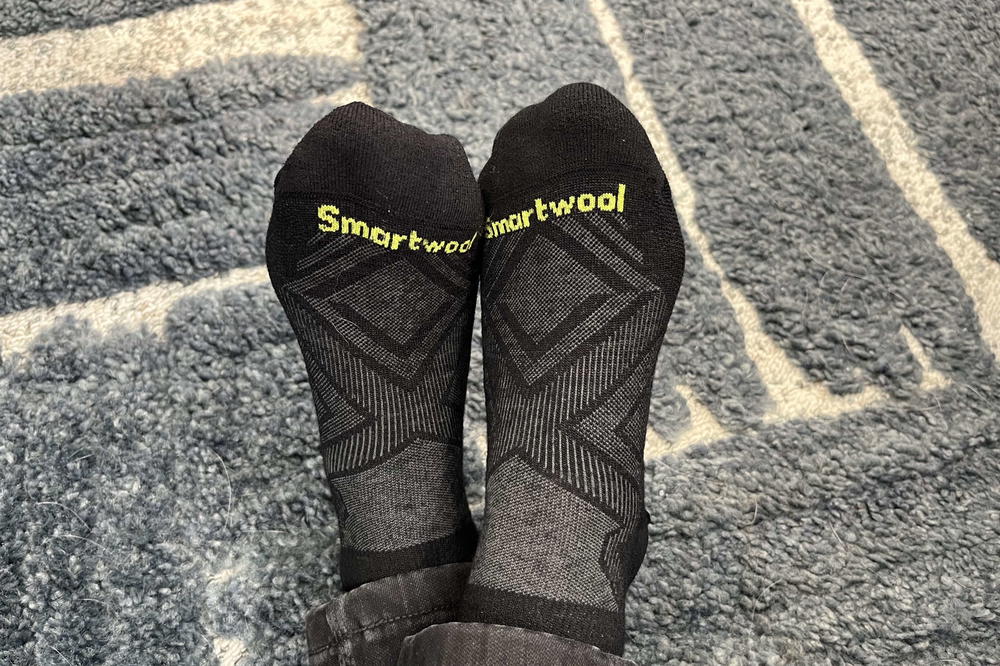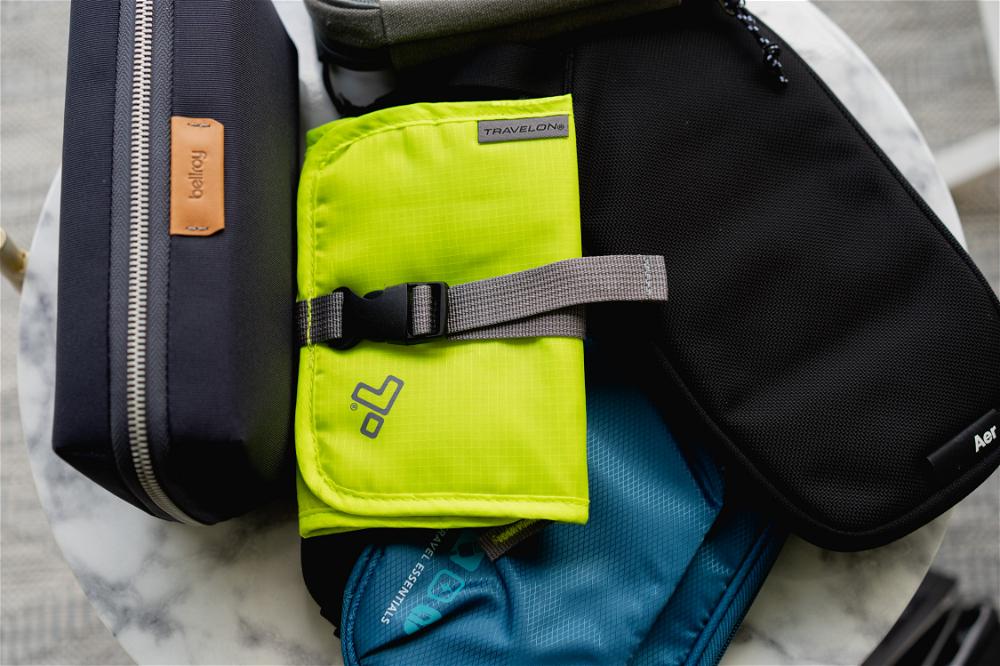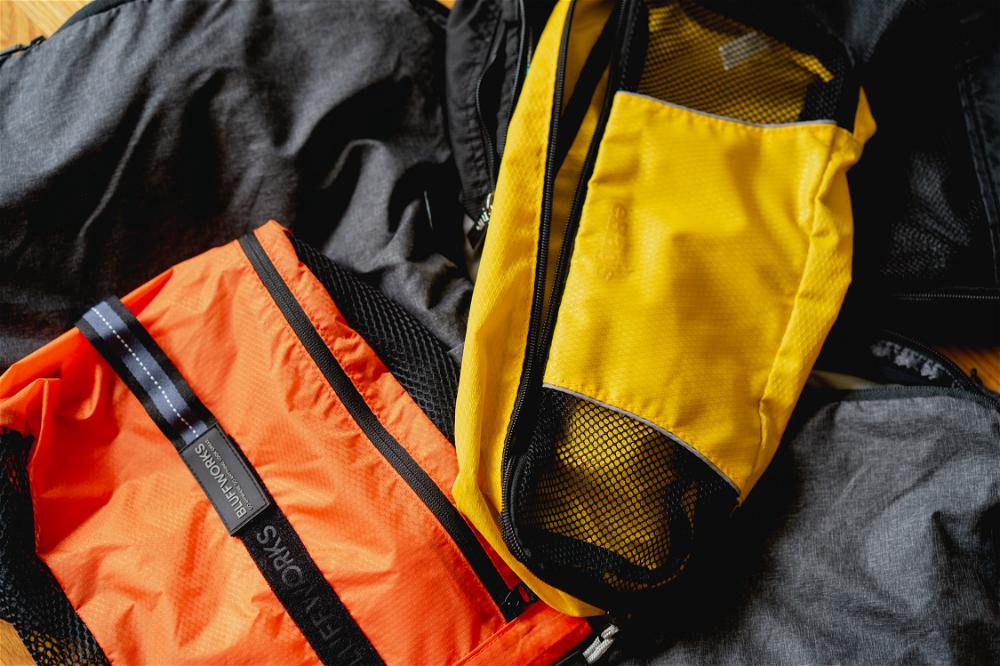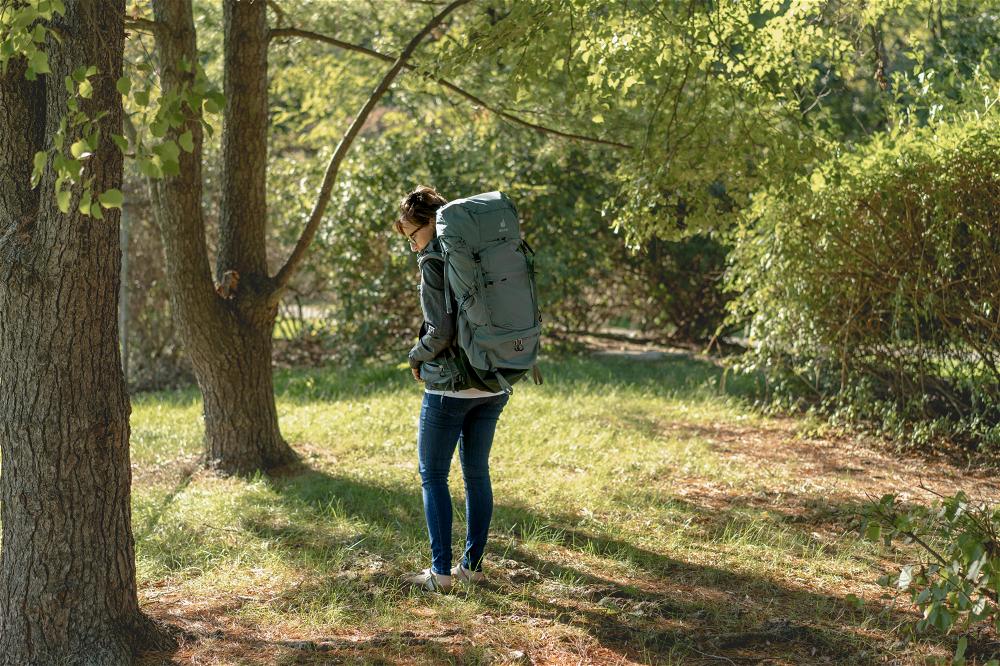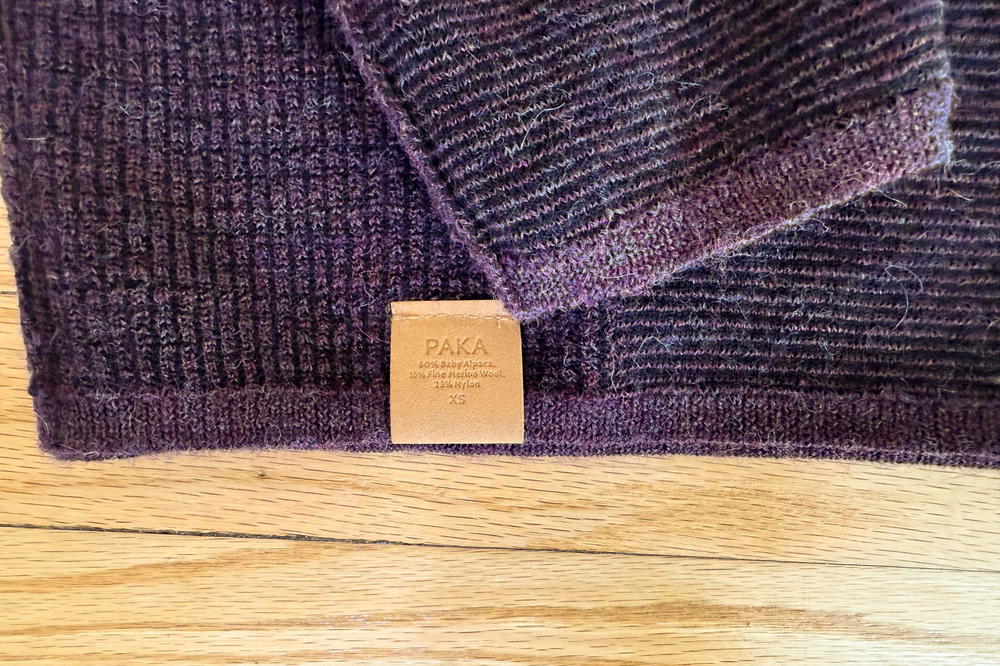10 Best Hiking Socks for Travel
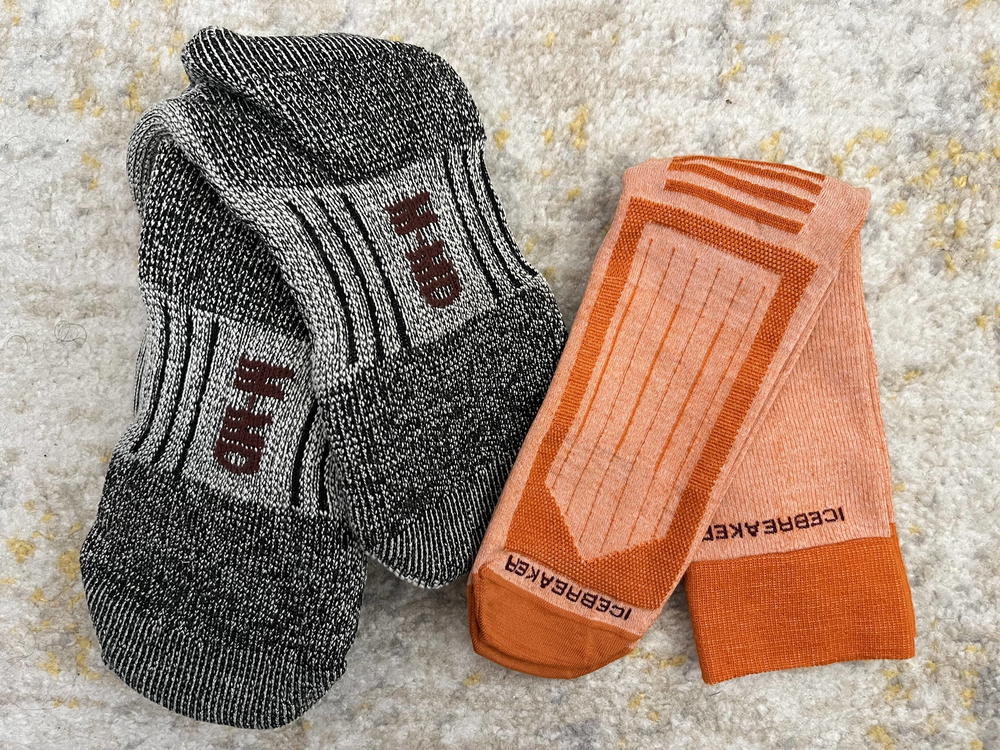
We rate the 10 best hiking socks for travel, from lightweight merino wool socks to moisture-wicking synthetic ones. For keeping your feet dry, supported and comfy, see which brands we recommend.
This article may contain affiliate links. We earn a small commission when you purchase via those links — at no extra cost to you. It's only us (Becca & Dan) working on this website, so we value your support! Read our privacy policy and learn more about us.
Best Hiking Socks for Travel
MinimizeHiking can put a lot of stress on your feet, yet it is one of my favorite physical activities during travel both to get a workout and to see gorgeous views.
As I’ve hiked, though, two things come to mind: how my feet feel in my shoes, and how my socks are slipping around. And also, are my feet cold? Hot? Are they sweaty? Are they going to stick? Are my socks wet? OH NO, are my socks okay?
In this list, we go through the best brands for hiking socks that’ll get you through your travels. Because it’s not only the hiking boots that matter: hiking socks are the other half of the equation for avoiding blisters, foot fungal infections, foot aches and dampness. Let’s hike into the suggestions, shall we?
Best heavy and mid-weight merino wool hiking socks
The more you look into travel socks, the more you’ll find that merino wool is the real winner for great sock material. Below, I list some trustworthy brands, like Darn Tough and Smartwool. These are two of the leaders in the sock world for hikers and travelers, and there are more, too!
Best lightweight and ultra-lightweight hiking socks
Lighter-weight merino wool blend socks are designed for being versatile. I find that I can fold up more lightweight socks in my packing cube, when compared to just a few heavier-weight socks. Of course, I like lightweight socks for summer hiking, and wouldn’t take them with me in winter. Ultra-lightweight ones are nice if I know I’ll be hiking on hot summer days.
What makes a hiking sock great?
Hiking socks are different from regular socks! If you think about your day to day, you are probably not doing things like bouldering, scaling rocks, using your feet to balance and wearing hiking boots (unless you’re a full-time hiker). So let’s look at what makes hiking socks unique.
Material matters
Merino wool is a superstar material for hiking socks because it’s:
- Soft and unlikely to irritate skin
- Naturally responsive to body temperature, cooling and warming as needed
- Odor-resistant (not perfect, but helps with odor management)
- Moisture-wicking
Synthetic materials like nylon and polyester are durable and wick moisture effectively, but they don’t provide the same temperature regulation as merino wool (because it is a natural fabric).
Avoid cotton - Despite its breathability for things like shirts and sweatpants, cotton is an inferior fabric for socks. This surprises many people! Cotton is super absorbent, so when your socks get sweaty, cotton socks will keep that moisture trapped against your skin. And, uh-oh, wet socks are the perfect breeding ground for bacteria and fungus, so this is what gives people infections.
Cushioning options
Hiking socks typically come in different cushioning levels:
- Lightweight: Minimal cushioning, maximum breathability - best for warm-weather hiking
- Midweight: Balanced cushion and breathability - most versatile option
- Heavyweight: Maximum cushioning - best for cold weather or extra padding like in rough-bottomed hiking boots
Sock height
Hiking socks come in all types of “heights,” and while some people have preferences in general, you’ll also want to consider the true height of your hiking boot or hiking shoe.
- Quarter/Crew: Rises just above the top of most hiking boots - versatile and popular
- Ankle: Shorter height for trail runners wearing trail running sneakers or low-cut hiking shoes
- Mid-Calf: Extra protection for overgrown trails and shin protection (also protect against things like ticks)
Which weather conditions require hiking socks?
Hiking socks are always a good idea if you’re, well, hiking. And actually, even if you feel like you’re hiking in “normal weather,” having hiking socks will help you out in feeling good from the bottom up. Of course, special weather conditions require consideration for having hiking socks that really help out.
Warm weather hiking
For warm weather hiking, think thin and breathable socks that won’t overheat your feet. Lightweight merino wool or synthetic moisture-wicking socks are ideal. These materials have helped us keep our feet cool, so that we don’t have to think about them while we’re doing things like trying to avoid tripping over rocks and branches on the trails.
Cold weather hiking
For colder climates, you want to keep your feet warm, so thicker wool socks that are optimized for warmth can do the trick. Midweight or heavyweight socks provide that extra insulation make a huge difference. Our Smartwool socks practically feel like sweaters for our feet (we didn’t know it was even possible!).
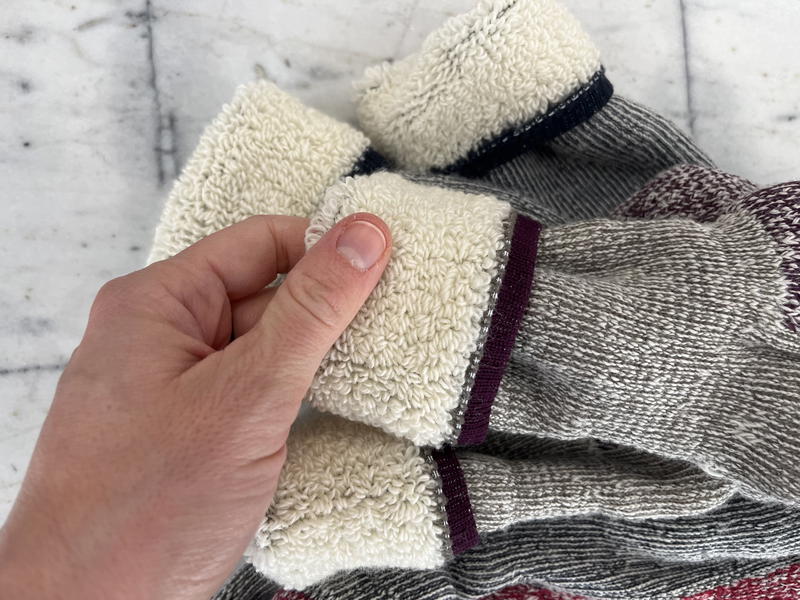
Wet climate hiking
This is where it gets complicated, because with wet climates, keeping feet dry is key for not feeling icky.
For wet climates, you’ll want to balance warmth with quick-drying abilities in your hiking socks. This is so that you don’t have to wear wet socks the next day. Some thick hiking socks might take forever to dry, but will keep your feet warm. You may want to consider waterproof shoes (check out our Vessi waterproof shoe review and specifically our Vessi Stormburst hiking shoe review) to help keep your socks dry.
Hiking Sock Fit
Good hiking socks should fit snugly without being too tight, with no slippage and no bulky seams. Look for:
- Seamless toes or flat toe seams to prevent irritation
- No bunching, because too much fabric is not comfortable
- Proper arch support built into the sock; arch support can really make a difference in keeping your feet feel perky and not fatigued (my experience!)
- Snug fit throughout, without constriction, which can cut off circulation or lead to pain
Durability and warranties
Because hiking socks involve a bigger investment than regular day-to-day “lifestyle” or plain walking socks, we recommend looking for lifetime guarantees or product warranties that protect your purchase.
Many premium hiking sock brands offer lifetime warranties, including:
- Darn Tough: Unconditionally guaranteed for life - you can send any pair back for replacement. My friend Daniela from JD Travel Couple told me that her Darn Tough merino socks have lasted for four years and still seem new.
- Farm to Feet: Satisfaction guaranteed with easy returns
- Smartwool: Quality guarantee with replacement options
Caring for your hiking socks
To extend the life of your hiking socks, try these tips.
- Don’t ball them up when you fold them - This stretches them out and causes them to lose shape more quickly.
- Turn inside out and wash in warm or cold water on a gentle cycle.
- Avoid fabric softener - This is never a good idea, and you really don’t need fabric softener on specialty fabrics
- Air-dry when possible - Heat from dryers breaks down fabric, so don’t use a dryer!
- Use low heat if you must machine dry. High heat can kill their elasticity.
One-Bag Travel and Hiking Socks
For minimalist travel, or carry-on-only travel, you likely only want a few pairs of socks. Having one type of sock for hiking makes sense. I only pack one pair of hiking socks for a trip where there’s regular hiking involved.
With one-bag capsule travel, you probably don’t want to pack more than three pairs of socks total, because space matters! You want to nit-pick everything that goes into your travel bag and packing cube.
Backpacker Travel and Hiking Socks
When backpacking, you may be without a washing machine for a few weeks if you’re trekking or staying in hostels! So, expect some sink washing. You’ll want your hiking socks to be quick-drying so that you don’t need to carry around wet socks in your pack.
You may only want a handful of pairs, because anything over three pairs starts to eat away space from other things you want to pack, like a travel pillow.
Next Steps
Now that you’ve found the perfect hiking socks, here’s what to read next:
- Best Travel Socks for Every Adventure - Complete guide to choosing the right socks
- Best Quick-Drying Socks for Travel - Perfect for wet hikes
- Best Travel Compression Socks - For long flights to your hiking destination
- Best Travel Accessories for Backpackers - Complete your adventure kit
Pro Tips
- Test your socks before your trip: Wear them on a few local hikes first to ensure they fit comfortably
- Pack an extra pair: Always bring a backup for multi-day hikes
- Match your sock to your shoes: Ensure your hiking boots or shoes have room for your sock thickness
- Consider merino wool: It’s naturally antimicrobial, so you can wear the same pair for multiple days
- Bring different weights: Pack lightweight socks for warm days and midweight for cooler mornings/evenings
🎒 Found the right gear?
We research and test the gear we recommend, so you can pack with confidence. If our suggestions improved your gear picks, treating us to a coffee keeps the reviews coming.
Help us test more gearYou may also like
-
![]()
10 Best Quick-Drying Socks for Travel: Fast-Drying Options
Discover the 10 best quick-drying socks for travel! From merino wool to synthetic blends, find socks that dry fast and keep your feet comfortable in any weather.
-
![Small pile of tech organizer bags]()
18 Best Tech Bags (Everyday Tech and Travel Organization)
Keep all of your tech products organized by finding the perfect small pouch and bag. Let's explore 18 options for storing the various cords, cables and small electronics you bring with you while traveling.
-
![A flatlay image of a bunch of packing cubes.]()
16 Best Packing Cubes for Travel in 2025 (Pack Smarter)
Packing cubes help keep your clothes organized and compressed. They're essential for traveling, but with so many options, how do you find the best packing cube? Let's find out!
-
![Woman using a Didymos baby carrier]()
The Best Baby Carriers for Travel (20+ Options!)
What are the best baby carrier brands and products for travel, especially for families? Check out this list of the best compact, packable and comfortable slings, carriers and wraps.
-
![]()
10 Best Helpful Travel Accessories for Backpackers in 2025
What are the best and most useful products to pack for a backpacking trip? After years of backpacking, I’m rating my favorite backpacker accessories for travelers.
-
![]()
PAKA Mountain Crew Sweater Review: Flexible and Durable for Travel
This review covers my take on the fit and feel of the PAKA Apparel Mountain Crew, and if you should consider it as a cold weather travel layer for hiking, camping and outdoor adventures.
